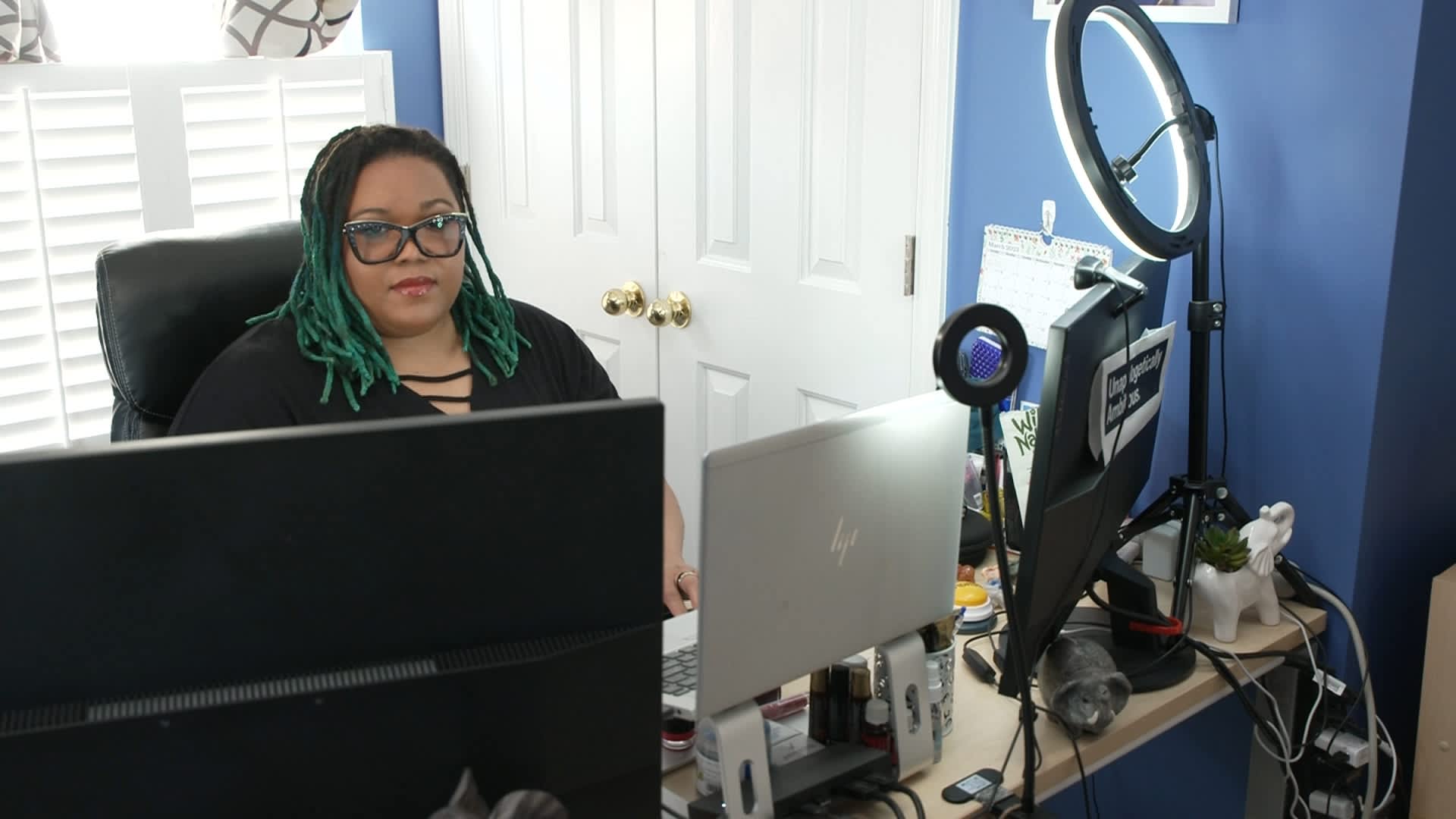Edwenna Ervin, known as “Eddie” to family, friends and colleagues, was living paycheck to paycheck when she first started working as a customer service agent for Verizon in 2016. And, she was struggling to come up with enough money to pay down debt.
“No matter how large your paycheck is, if you don’t know how to save, you don’t know how to apply it to your bills or or just manage it, it might as well be a small paycheck,” Ervin said.
One of her managers at the time told her about the company’s employee assistance program, or EAP, a free workplace benefit that offers support for workers facing financial challenges and other issues. The program provided resources and counseling to help Ervin with budgeting, managing money and paying off debt.
“It helped me work out a way to manage it better, so that I had a balance between what I needed to pay and what I needed to live,” said Ervin, who is now a senior engineer project manager at Verizon working remotely from her South Carolina home.
Workplace benefits help manage daily finances
Less than a quarter, 21%, of employers currently offer non-retirement financial benefits, according to a 2022 survey by the Society for Human Resource Management. Companies report that some of the most important benefits to companies include those related to health, retirement savings and planning and flexible work, but non-retirement financial benefits aren’t far down the list.
Many employers say they are listening to their workers’ needs.
“The traditional focus on financial wellness, which was almost exclusively around the 401(k) plan, it’s just not sufficient anymore. Our employees are asking for help with all aspects of their financial life,” said Kevin Cammarata, vice president of benefits at Verizon.
“While you can pay workers more, that doesn’t mean they’ll be financially secure,” he said. “So increasingly, we as employers have to help employees do their jobs, earn their wages, but also manage their wages as well.”
Research shows that employees who have had access to financial education and tools, including videos, classes and coaching, are more likely to increase savings, feel less overwhelmed by debt and make progress toward their financial goals.
Not ‘a perfect solution’
Yet, financial literacy advocate Laura Levine says providing those resources through the workplace is “not the perfect solution” and may not reach the most vulnerable employees.
“If it’s an ‘opt in’ [benefit], you sometimes miss the people who need this, because they’re worried that if they take the course, or take advantage of what’s being offered, that people will judge them for what they don’t know,” said Levine, president and CEO of the JumpStart Coalition, a Washington, D.C.-based non-profit focused on financial education for students.
“By the time you’re a working adult, you know, it’s a little bit late, you may have already gone down a path that that’s going to be hard to correct,” she said.
Educating workers and families about finances
Ervin wishes she had learned more about budgeting and financial planning much earlier — for herself and her family.
“We struggled a very long time unnecessarily, because we didn’t have the knowledge or tools or skills to do what we would need to do to make things better,” she said.
After going through the EAP, Ervin raised her credit score. She bought a house and a new car. And, now she helps her parents with their finances.
Join “Women & Wealth,” a CNBC Your Money event, on April 11 as we explore ways women can increase their income, save for the future and make the most out of current opportunities. Register at cnbcevents.com for this virtual event.
SIGN UP: Money 101 is an 8-week learning course to financial freedom, delivered weekly to your inbox. For the Spanish version Dinero 101, click here.
